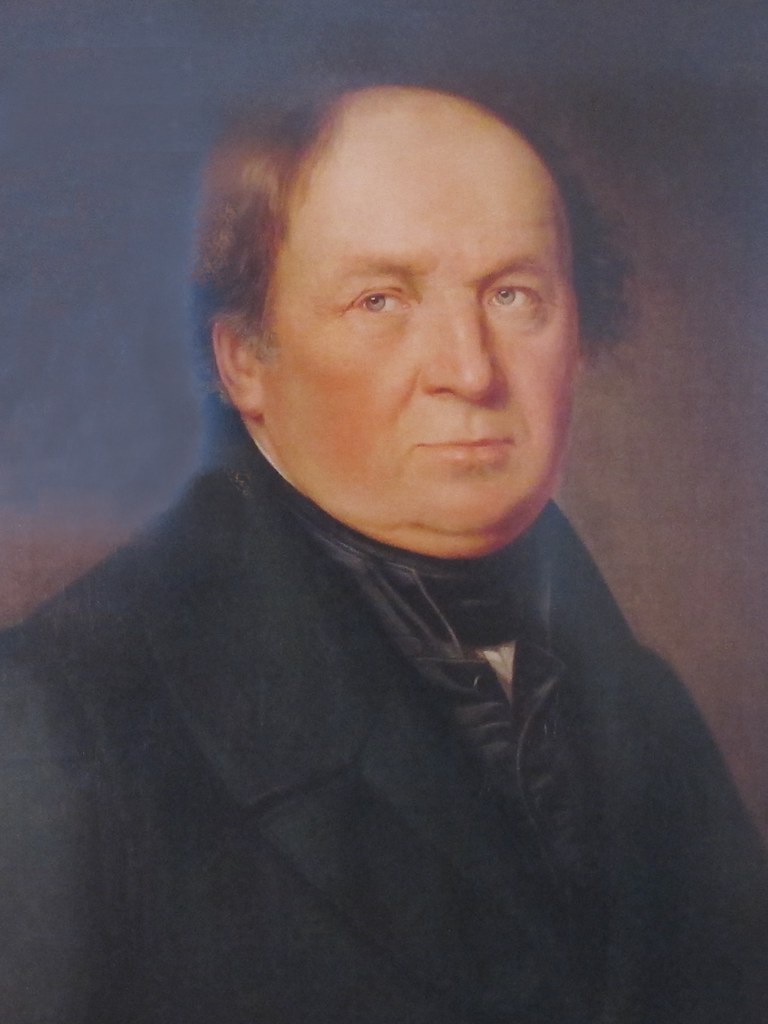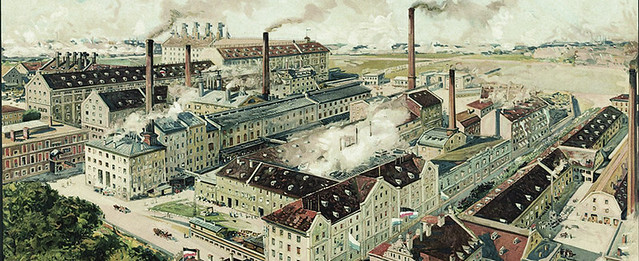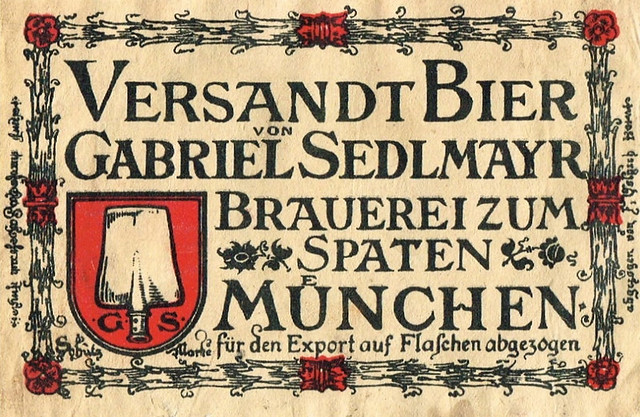
Today is the birthday of Gabriel Sedlmayr (March 21, 1772-November 19, 1839). He is sometimes referred to as Gabriel Sedlmayr I or Gabriel Sedlmayr the Elder to avoid confusion with his arguably more historically important son, Gabriel Sedlmayr II. In 1807, Gabriel Sedlmayr the Elder acquired the Spaten brewery, when “at the time was the smallest brewery in Munich.” All his Find-a-Grave page says is “Beer brewer, brandy and vinegar manufacturer, bought the location and building of the later founded Spaten Brewery.”

This is his entry in the Oxford Encyclopedia of Beer, written by Ian Horsey:
Sedlmayr, Gabriel the Elder
[He] purchased a rather unremarkable brewery in Munich, in 1807. Nobody could have imagined then that this commonplace transaction, conducted by an erstwhile brewmaster to the Bavarian Royal Court, would herald the birth of one of the greatest brewing dynasties on earth, and help change the world of brewing forever. The brewery in question was Spaten, which had started life as a Munich brewpub in 1397. Between 1622 and 1704 it was owned by the Späth family, from which the brewery took its name of Spaten (the German word for “spade”). Subsequently, the brewery changed hands a few times, until it was acquired by the Siesmayr family, who sold it to Sedlmayr. The new owner’s brewing acumen was to serve the company well, and, coupled with his energy and enterprise, was to transform Spaten from virtual obscurity—ranking last in terms of malt consumption among Munich’s 52 brewers at the time—to a position of prominence, having become the third-largest brewery in Munich, after Hacker and Pschorr, by 1820. A decade later, Spaten beer was even respectable enough to be served in Munich’s world-renowned Hofbräuhaus, the 1589 former private, now public, watering hole of the Dukes of Wittelsbach, the ruling Bavarian Dynasty between 1180 and 1918. See wittelsbacher family. Much of Sedlmayr’s success stemmed from his readiness to embrace the new brewing technologies that were being developed in Europe in the course of the Industrial Revolution. It was under his stewardship, with direction from his son Gabriel the Younger, for instance, that Spaten experimented with new malting techniques in the 1830s. See sedlmayr, gabriel the younger. In the process, Spaten developed a highly aromatic, deep amber malt now known as Munich malt. The brewery used this malt as the foundation grist of a new lager style, the märzen, which it introduced in 1841. See märzenbier and munich malt. Gabriel Sedlmayr was fortunate in that he had two sons, Gabriel and Josef, who followed in his footsteps as gifted brewers. They assumed the Spaten reins upon Gabriel the Elder’s death in 1839, and immediately began to write their own part of brewing history by turning Spaten into Munich’s leading brewery by the end of the 19th century.
And here’s a part of a timeline from the Munich Beer Gardens website:
- 1397: A brewer named Hans Welser of the Welser Prew at Neuhausergasse 4 is recorded in the Munich tax records. Several ownership changes of the brewery occurred over the following 125 years.
- 1522: The Welser brewery is bought by the Starnberger family.
- 1622: The brewery is acquired by the Spatt family, who begin to produce a brew by the name Oberspathbräu, eventually changing the name to Spaten, which refers to the spade.
- 1704: The Sießmayr family takes over the brewery while retaining the Spaten brand name.
- 1807: The Königliche Hofbräumeister, the brewmaster for the royal court, Gabriel Sedlmayr acquires the Spaten brewery, which at the time was the smallest brewery in Munich.
- 1817: Spaten purchases the Filserbräukeller in Bayerstrasse, later to became known as the Spaten Keller.
- 1839: Following the death of Gabriel Sedlmayr, his sons Gabriel and Joseph take over the brewery business.
- 1842: Joseph Sedlmayr withdraws his partnership from Spaten Brauerei and buys the Leistbrauerei.
- 1851: Spaten purchases the current property location in Marsstrasse which includes the Silberbauer Keller. Many more acquisitions followed.
- 1854: The move of the entire brewery to Marsstrasse is completed.
- 1861: Joseph Sedlmayr buys the shares of August Deiglmayr, with whom he ran the Franziskaner Brauerei (Franziskaner Leistbräu) since 1858.
- 1867: Spaten Brauerei becomes the largest brewery in Munich and maintains its top position until 1890s. Spaten Brauerei receives a golden medal for their German beer at the World Exposition in Paris.
- 1874: Johann, Carl and Anton Sedlmayr takes the brewery over from their father Gabriel Sedlmayr.
- 1884: The artist Otto Hubb designs the Spaten logo with the familiar spade which symbolise a malt shovel and the initials GS in honor of the elder Gabriel Sedlmayr. A similar version of this logo is still in use today.
- 1891: Spaten Brauerei founded a branch in London selling the “Spaten Munich Lager” brand.
- 1894: Spaten becomes the first Munich brewery to brew lager in Pilsener style, the “Spaten Münchner Hell”, intended for sale in northern Germany.
- 1895: Spaten is the first brewery to introduce the Hell (lager) in Munich. Other Munich breweries follow their example.
- 1909: Spaten begins to export its beer to America on a regular basis.


